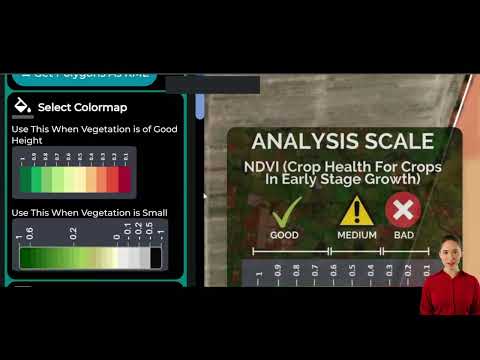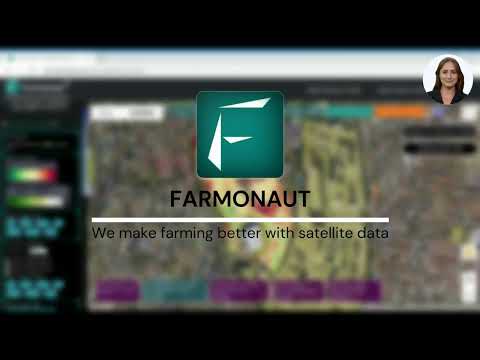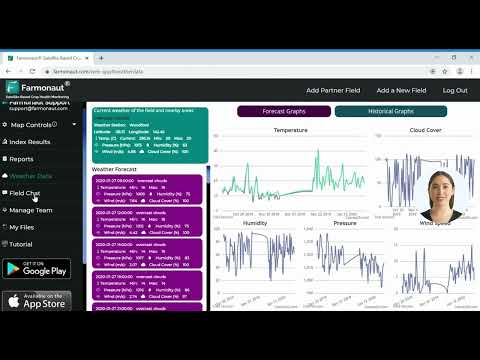Revolutionizing Coastal Resilience: How South Carolina’s Living Shorelines Combat Erosion and Boost Marine Ecosystems
“A $169,667 grant in South Carolina is funding advanced GIS, aerial imagery, and LiDAR technology to map optimal living shoreline locations.”
In the face of rising sea levels and increasingly frequent coastal storms, we find ourselves at a critical juncture in the battle against coastal erosion. Beaufort County, South Carolina, is leading the charge with an innovative approach that not only protects our shorelines but also enhances marine ecosystems. Welcome to the world of living shorelines – a revolutionary concept that’s transforming how we think about coastal resilience.
In this comprehensive exploration, we’ll delve into the groundbreaking efforts underway in South Carolina, examining how living shorelines are reshaping our approach to coastal protection. From the intricate web of oyster reefs to the lush vegetation that lines our shores, we’ll uncover the myriad benefits these natural solutions offer and how they’re breathing new life into our coastal communities.
Understanding Living Shorelines: Nature’s Shield Against Erosion
Living shorelines represent a paradigm shift in coastal protection methods. Unlike traditional hardened structures like seawalls or bulkheads, living shorelines harness the power of nature to create a resilient barrier against erosion. But what exactly are living shorelines, and how do they work?
At their core, living shorelines are a form of natural shoreline stabilization that utilizes native vegetation, oyster reefs, and other organic materials to protect coastlines from erosion while simultaneously enhancing habitat for marine life. This approach not only addresses the immediate concern of coastal erosion but also contributes to long-term ecosystem health and biodiversity.
Key Components of Living Shorelines
- Native Vegetation: Plants like Spartina alterniflora (smooth cordgrass) and Juncus roemerianus (black needlerush) play a crucial role in stabilizing shorelines and absorbing wave energy.
- Oyster Reefs: These natural barriers act as breakwaters, dissipating wave energy and providing habitat for countless marine species.
- Natural Materials: Biodegradable materials like coconut fiber logs and wooden stakes are often used to provide initial stability while vegetation establishes itself.
The beauty of living shorelines lies in their ability to adapt and grow over time, becoming increasingly effective as vegetation matures and oyster reefs expand. This dynamic nature sets them apart from static, man-made structures and aligns perfectly with the ever-changing coastal environment.
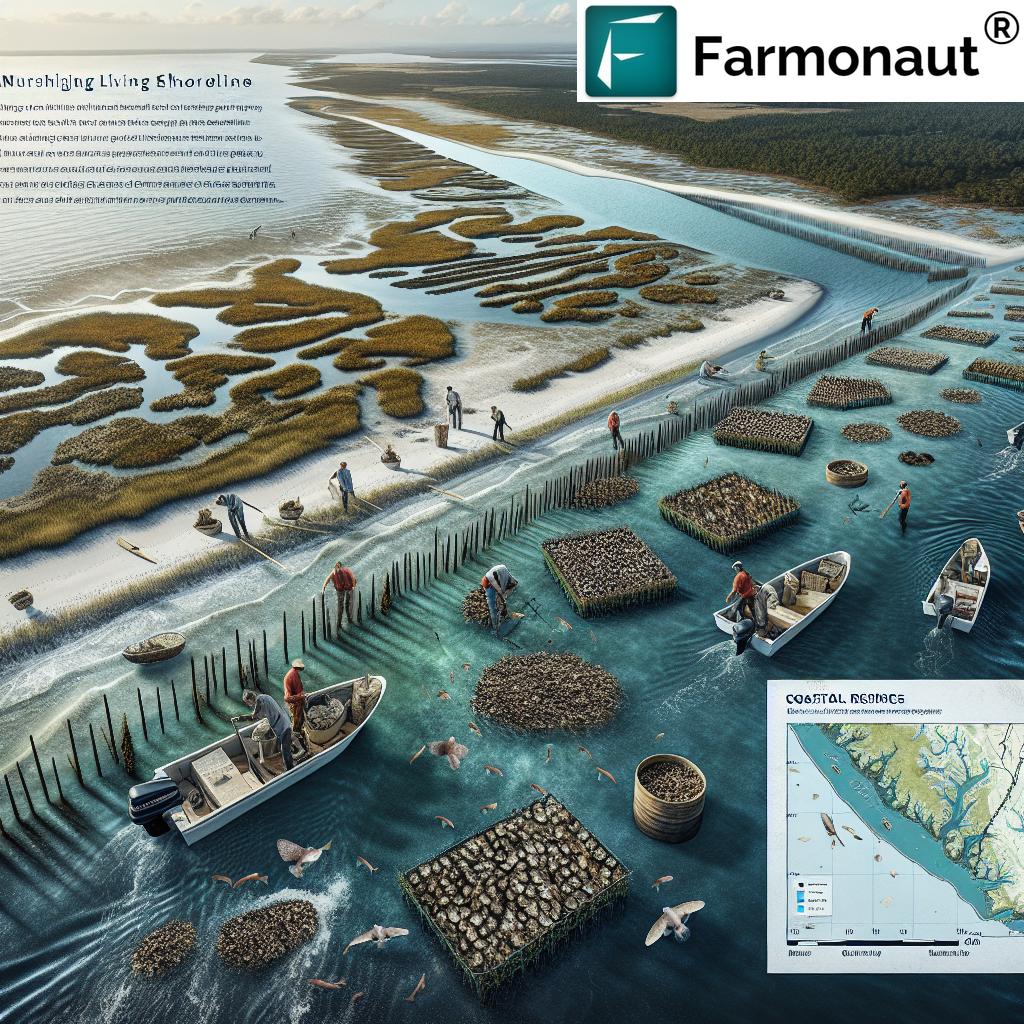
The Beaufort County Initiative: A Model for Coastal Resilience
Beaufort County’s recent acquisition of a $169,667 grant from the National Fish and Wildlife Foundation’s National Coastal Resilience Fund marks a significant milestone in the region’s commitment to sustainable coastal management. This financial boost, coupled with $153,054 in matched services from the county’s GIS Department, sets the stage for a comprehensive approach to developing living shorelines along South Carolina’s coast.
Leveraging Advanced Technology for Precision Mapping
One of the most exciting aspects of this initiative is the utilization of cutting-edge technology to identify optimal locations for living shoreline development. The county’s GIS Department will employ a suite of advanced tools, including:
- Aerial Imagery: High-resolution satellite and drone imagery will provide detailed views of the coastline, allowing for precise mapping of erosion-prone areas.
- LiDAR Technology: Light Detection and Ranging (LiDAR) will be used to create accurate 3D models of the shoreline, helping to identify areas most susceptible to erosion and best suited for living shoreline implementation.
- GIS Analysis: Geographic Information Systems will integrate various data layers to create comprehensive maps that consider factors such as tidal patterns, storm surge risk, and existing marine habitats.
This tech-driven approach ensures that living shorelines are strategically placed for maximum effectiveness, optimizing both erosion control and habitat enhancement.
Aligning with Long-Term Resilience Goals
The living shorelines project is not an isolated effort but a key component of Beaufort County’s Long-Term Resilience Strategy. This comprehensive plan aims to safeguard critical infrastructure, protect culturally important sites, and support vulnerable communities in the face of climate change and sea-level rise.
“Beaufort County’s living shorelines project aims to protect critical infrastructure, cultural sites, and vulnerable communities along its coastline.”
By integrating living shorelines into this broader strategy, Beaufort County is taking a holistic approach to coastal resilience, addressing both immediate erosion concerns and long-term sustainability goals.
The Science Behind Living Shorelines: How Nature Combats Erosion
To truly appreciate the revolutionary nature of living shorelines, it’s essential to understand the scientific principles that make them so effective. Let’s dive into the mechanics of how these natural systems protect our coasts and enhance marine ecosystems.
Wave Energy Dissipation
One of the primary functions of living shorelines is to reduce the impact of wave energy on the coast. Here’s how different components contribute to this process:
- Oyster Reefs: These natural breakwaters are incredibly effective at absorbing and dispersing wave energy. As waves encounter the complex structure of an oyster reef, their energy is dissipated, reducing their erosive power before they reach the shore.
- Vegetation: Plants like Spartina alterniflora have flexible stems that bend with the waves, further absorbing energy. Their root systems also help to stabilize sediments, preventing erosion from below.
Unlike hard structures that simply reflect wave energy, potentially causing erosion elsewhere, living shorelines work with natural processes to gradually reduce wave impact across a wider area.
Sediment Accumulation and Stabilization
Living shorelines don’t just prevent erosion; they actively contribute to shoreline buildup through a process called accretion. Here’s how it works:
- Slowing Water Flow: Vegetation and oyster reefs slow the movement of water, allowing suspended sediments to settle out.
- Trapping Sediment: The complex structures of living shorelines trap these sediments, gradually building up the shoreline over time.
- Root Stabilization: As plants grow, their root systems help to bind and stabilize accumulated sediments, creating a more resilient shoreline.
This natural process of sediment accumulation allows living shorelines to adapt to changing sea levels, providing long-term protection against erosion and flooding.
Ecosystem Benefits: Beyond Erosion Control
While the primary goal of living shorelines is to combat coastal erosion, their benefits extend far beyond shoreline protection. These natural systems play a crucial role in enhancing marine ecosystems and supporting biodiversity.
Habitat Creation and Enhancement
Living shorelines create diverse habitats that support a wide range of marine life:
- Oyster Reefs: These structures provide habitat for oysters, mussels, crabs, and small fish. They also serve as feeding grounds for larger fish and birds.
- Vegetation: Marsh grasses and other coastal plants offer shelter and nesting sites for birds, as well as nursery areas for juvenile fish and crustaceans.
- Intertidal Zones: The gradual slope of living shorelines creates varied intertidal habitats, supporting a diverse range of species adapted to different levels of tidal inundation.
By creating these complex, interconnected habitats, living shorelines contribute significantly to marine biodiversity and ecosystem resilience.
Water Quality Improvement
Living shorelines play a vital role in maintaining and improving water quality in coastal areas:
- Filtration: Oysters are natural filter feeders, capable of filtering up to 50 gallons of water per day. This helps to remove excess nutrients and pollutants from the water.
- Nutrient Uptake: Coastal vegetation absorbs excess nutrients from runoff, helping to prevent algal blooms and maintain water clarity.
- Sediment Trapping: By slowing water flow and trapping sediments, living shorelines help to reduce turbidity in coastal waters.
These water quality improvements not only benefit marine life but also enhance recreational opportunities and aesthetic value for coastal communities.
Comparative Analysis: Living Shorelines vs. Traditional Methods
To fully appreciate the revolutionary nature of living shorelines, it’s essential to compare them with traditional coastal protection methods. Let’s examine how these approaches stack up against each other in various key aspects:
| Aspect | Traditional Shorelines | Living Shorelines |
|---|---|---|
| Erosion Control Effectiveness | Moderate – High initially, but may worsen erosion over time | High – Improves over time as vegetation and reefs establish |
| Ecosystem Impact | Low – Often disruptive to natural habitats | High – Enhances and creates natural habitats |
| Water Quality Improvement | Minimal to none | Significant – Filters water and absorbs excess nutrients |
| Marine Life Support | Low – Limited habitat value | High – Provides diverse habitats for numerous species |
| Long-term Resilience | Moderate – May require frequent maintenance | High – Self-sustaining and adaptive to changing conditions |
| Cost-effectiveness | High initial cost, ongoing maintenance expenses | Moderate initial cost, lower long-term maintenance |
| Adaptability to Sea Level Rise | Low – Static structures may become submerged | High – Can naturally adapt through sediment accumulation |
This comparison clearly illustrates the numerous advantages of living shorelines over traditional methods, particularly in terms of long-term sustainability and ecological benefits.
Implementation Challenges and Solutions
While living shorelines offer numerous benefits, their implementation is not without challenges. Understanding these obstacles and developing effective solutions is crucial for the success of projects like Beaufort County’s initiative.
Site-Specific Design Requirements
Challenge: Each coastal area has unique characteristics that affect the design and effectiveness of living shorelines.
Solution: Beaufort County’s use of advanced GIS tools, aerial imagery, and LiDAR technology allows for precise mapping and analysis of local conditions. This data-driven approach ensures that living shoreline designs are tailored to specific site requirements, maximizing their effectiveness and minimizing potential negative impacts.
Regulatory Hurdles
Challenge: Implementing living shorelines often involves navigating complex permitting processes and regulatory requirements.
Solution: By aligning the project with the county’s Long-Term Resilience Strategy and working closely with environmental agencies, Beaufort County is streamlining the approval process. This collaborative approach helps to ensure that living shoreline projects meet all necessary regulations while advancing broader resilience goals.
Public Perception and Education
Challenge: Some property owners may be skeptical of living shorelines, preferring traditional hardened structures.
Solution: Beaufort County is focusing on community engagement and education to build support for living shorelines. By demonstrating the long-term benefits and effectiveness of these natural solutions, the county aims to shift public perception and encourage widespread adoption.
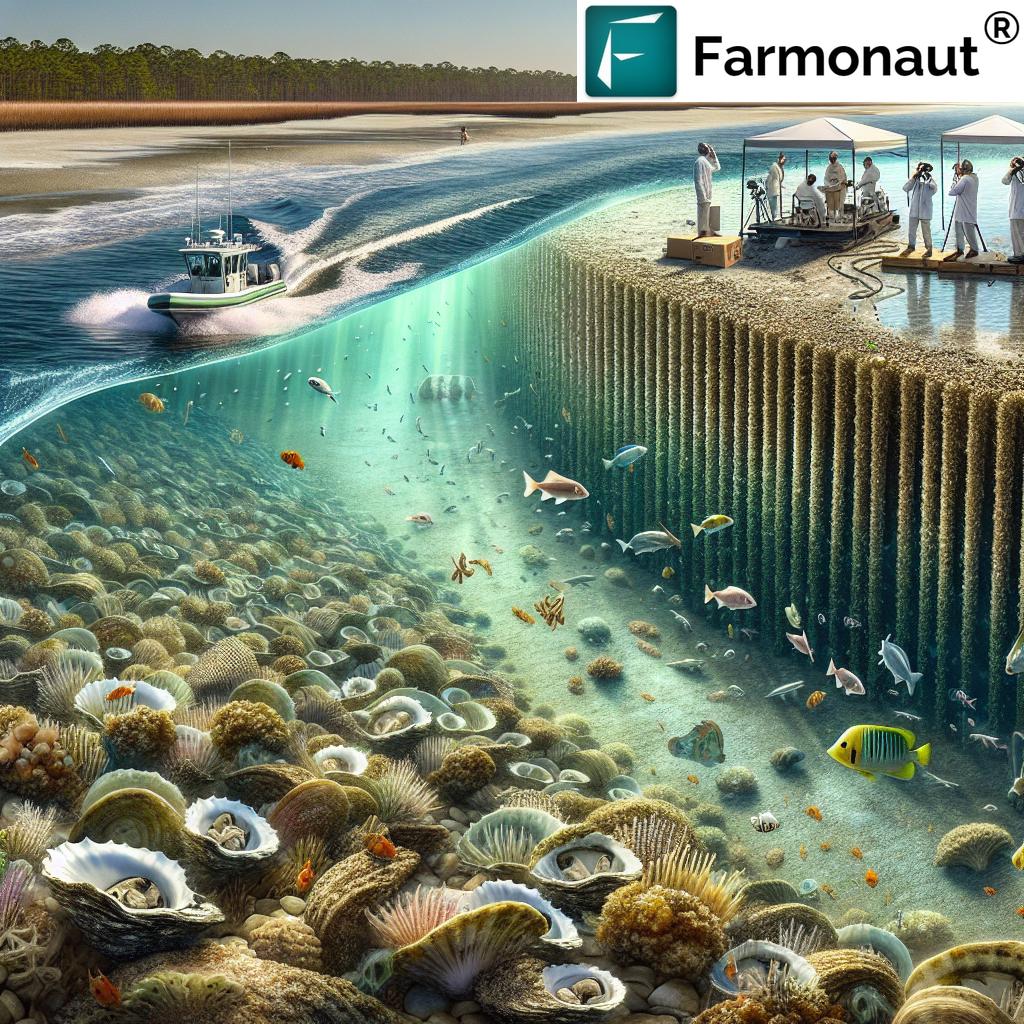
The Role of Technology in Coastal Resilience
As we’ve seen, technology plays a crucial role in the planning and implementation of living shorelines. But the applications of advanced tech in coastal resilience extend far beyond mapping and design. Let’s explore how cutting-edge technologies are revolutionizing our approach to coastal management.
Remote Sensing and Satellite Monitoring
Satellite-based monitoring systems, like those offered by Farmonaut, are becoming invaluable tools in coastal management. While primarily focused on agricultural applications, these technologies have significant potential for coastal monitoring:
- Vegetation Health Monitoring: Using multispectral imagery, coastal managers can track the health and growth of shoreline vegetation, ensuring the vitality of living shorelines.
- Change Detection: Regular satellite imagery allows for the detection of shoreline changes over time, helping to identify areas of erosion or accretion.
- Environmental Impact Assessment: Satellite data can be used to monitor water quality, sediment distribution, and other environmental factors that impact coastal ecosystems.
By leveraging these technologies, coastal managers can make data-driven decisions and respond quickly to changing conditions.
AI and Machine Learning in Coastal Modeling
Artificial Intelligence (AI) and Machine Learning (ML) are revolutionizing our ability to predict and model coastal processes:
- Erosion Prediction: AI algorithms can analyze historical data and current conditions to predict future erosion patterns, allowing for proactive management.
- Ecosystem Modeling: Machine learning models can simulate complex ecosystem interactions, helping to predict the long-term impacts of living shorelines on marine habitats.
- Adaptive Management: AI-powered systems can continuously analyze data from various sources, providing real-time insights and recommendations for coastal management strategies.
These advanced modeling capabilities enable more accurate long-term planning and help optimize the design and placement of living shorelines.
Drone Technology in Coastal Monitoring
Unmanned Aerial Vehicles (UAVs) or drones are becoming increasingly important tools in coastal management:
- High-Resolution Mapping: Drones can capture detailed, up-to-date imagery of coastal areas, providing a level of detail that’s often impossible with satellite imagery alone.
- Frequent Monitoring: The low cost and ease of use of drones allow for more frequent monitoring of living shorelines, enabling rapid response to any issues.
- 3D Modeling: Using photogrammetry techniques, drone imagery can be used to create accurate 3D models of shorelines, aiding in design and monitoring of living shoreline projects.
The integration of drone technology with GIS and satellite data provides a comprehensive view of coastal environments, enhancing our ability to implement and manage living shorelines effectively.
Community Engagement and Volunteer Initiatives
The success of living shoreline projects often depends on community support and involvement. Beaufort County’s approach to coastal resilience recognizes the importance of engaging local residents and leveraging volunteer efforts.
Education and Outreach Programs
To build public support for living shorelines, Beaufort County is implementing comprehensive education and outreach programs:
- Public Workshops: Regular workshops educate residents about the benefits of living shorelines and how they can contribute to coastal resilience.
- School Programs: Partnerships with local schools introduce students to coastal ecology and the importance of sustainable shoreline management.
- Demonstration Sites: Publicly accessible living shoreline projects serve as educational tools, allowing residents to see these natural solutions in action.
These initiatives help to build a community-wide understanding of coastal resilience and foster a sense of stewardship for local marine environments.
Volunteer Opportunities in Living Shoreline Projects
Beaufort County is actively involving community members in the implementation and maintenance of living shorelines:
- Oyster Reef Construction: Volunteers participate in building oyster reefs using recycled shells, contributing directly to shoreline protection efforts.
- Native Plant Restoration: Community planting events help to establish and maintain the vegetation component of living shorelines.
- Monitoring Programs: Citizen science initiatives engage volunteers in ongoing monitoring of living shoreline health and effectiveness.
These volunteer opportunities not only provide valuable support for coastal resilience projects but also foster a deep connection between community members and their local environment.
Economic Benefits of Living Shorelines
While the environmental advantages of living shorelines are clear, their economic benefits are equally compelling. Let’s explore how these natural solutions contribute to the economic resilience of coastal communities.
Cost-Effectiveness in Coastal Protection
Living shorelines often prove more cost-effective than traditional hardened structures in the long run:
- Lower Maintenance Costs: Unlike seawalls or bulkheads that require regular maintenance and eventual replacement, living shorelines are self-sustaining and can actually improve over time.
- Natural Adaptation: As sea levels rise, living shorelines can naturally adapt through sediment accumulation, reducing the need for costly retrofits or replacements.
- Multi-Functional Benefits: The ecosystem services provided by living shorelines, such as water filtration and habitat creation, offer additional economic value beyond erosion control.
Supporting Local Industries
The implementation of living shorelines can have positive ripple effects throughout the local economy:
- Fisheries Enhancement: By creating productive habitats for fish and shellfish, living shorelines support local fishing industries.
- Tourism Boost: Healthier coastal ecosystems attract more visitors, benefiting the tourism sector.
- Job Creation: The design, implementation, and monitoring of living shorelines create opportunities for local environmental consultants, landscapers, and marine contractors.
These economic benefits underscore the value of investing in natural coastal protection methods like living shorelines.
Future Directions: Scaling Up Living Shoreline Initiatives
As the success of projects like Beaufort County’s living shorelines initiative becomes evident, there’s growing interest in scaling up these efforts across South Carolina and beyond. Let’s explore the potential future directions for living shoreline implementation.
Regional Collaboration and Knowledge Sharing
Expanding the impact of living shorelines requires collaboration beyond county lines:
- Inter-County Partnerships: Beaufort County’s success can serve as a model for neighboring counties, fostering regional approaches to coastal resilience.
- State-Level Initiatives: South Carolina could develop state-wide policies and funding mechanisms to support the widespread adoption of living shorelines.
- Cross-State Collaboration: Sharing knowledge and best practices with other coastal states can accelerate the implementation of living shorelines across the Eastern Seaboard.
Integration with Broader Climate Adaptation Strategies
Living shorelines are just one piece of the larger climate adaptation puzzle. Future initiatives will likely focus on integrating these natural solutions with other resilience strategies:
- Comprehensive Coastal Management: Combining living shorelines with other nature-based solutions like wetland restoration and green infrastructure to create holistic coastal protection systems.
- Urban Planning Integration: Incorporating living shoreline concepts into urban waterfront development to create more resilient and ecologically friendly coastal cities.
- Climate Change Mitigation: Exploring the potential of living shorelines to sequester carbon and contribute to climate change mitigation efforts.
Conclusion: A New Era of Coastal Resilience
As we’ve explored throughout this article, living shorelines represent a paradigm shift in how we approach coastal protection and ecosystem management. Beaufort County’s innovative initiative, backed by advanced technology and community engagement, serves as a shining example of how we can work with nature to create more resilient and vibrant coastal environments.
The benefits of living shorelines extend far beyond erosion control. By enhancing marine habitats, improving water quality, and supporting local economies, these natural solutions offer a holistic approach to coastal management that aligns perfectly with the principles of sustainability and environmental stewardship.
As we face the challenges of climate change and rising sea levels, the lessons learned from projects like Beaufort County’s will be invaluable. By embracing nature-based solutions and leveraging cutting-edge technology, we can create a future where our coastlines are not just protected, but thriving.
The revolution in coastal resilience is here, and living shorelines are leading the way. It’s time for coastal communities everywhere to consider how these innovative approaches can help secure a sustainable and vibrant future for our shores.
FAQ Section
Q1: What are the main benefits of living shorelines compared to traditional coastal protection methods?
A1: Living shorelines offer several advantages over traditional methods:
- Enhanced erosion control that improves over time
- Creation and improvement of marine habitats
- Natural adaptation to sea-level rise
- Improved water quality through filtration
- Lower long-term maintenance costs
- Support for local ecosystems and biodiversity
Q2: How do living shorelines contribute to water quality improvement?
A2: Living shorelines improve water quality through:
- Oyster reefs filtering water and removing excess nutrients
- Vegetation absorbing pollutants and excess nutrients from runoff
- Reduced erosion leading to less sediment in the water
- Creation of habitats for filter-feeding organisms
Q3: What role does technology play in the implementation of living shorelines?
A3: Technology is crucial in living shoreline projects:
- GIS and LiDAR for precise mapping and site selection
- Satellite imagery for monitoring vegetation health and shoreline changes
- AI and machine learning for predictive modeling and adaptive management
- Drone technology for high-resolution mapping and frequent monitoring
Q4: How can communities get involved in living shoreline projects?
A4: Communities can participate in living shoreline initiatives through:
- Volunteer opportunities in oyster reef construction and plant restoration
- Participation in educational workshops and outreach programs
- Engagement in citizen science monitoring projects
- Supporting local policies that promote living shoreline development
Q5: What are the long-term economic benefits of implementing living shorelines?
A5: Living shorelines offer several economic advantages:
- Lower long-term maintenance costs compared to hardened structures
- Support for local fishing industries through habitat enhancement
- Increased tourism potential due to improved coastal ecosystems
- Job creation in environmental consulting, landscaping, and marine contracting
- Reduced damage from storms and flooding, leading to lower insurance and repair costs
Earn With Farmonaut: Join our Affiliate Program
Earn 20% recurring commission with Farmonaut’s affiliate program by sharing your promo code and helping farmers save 10%. Onboard 10 Elite farmers monthly to earn a minimum of $148,000 annually—start now and grow your income!
Explore Farmonaut’s Solutions
While Farmonaut primarily focuses on agricultural solutions, many of its technologies have potential applications in coastal management and environmental monitoring. Here are some relevant Farmonaut services that could be adapted for coastal resilience projects:
- Carbon Footprinting: This tool could be used to assess the carbon sequestration potential of living shorelines and coastal vegetation.
- Traceability: While designed for agricultural products, this system could be adapted to track the sourcing and implementation of materials used in living shoreline projects.
- Fleet Management: This service could be useful for managing vehicles and equipment used in coastal restoration projects.
- Crop Plantation and Forest Advisory: The principles behind this service could be applied to monitoring and managing coastal vegetation in living shoreline projects.
To learn more about how Farmonaut’s technology could potentially be adapted for coastal management, visit their website or explore their mobile apps:
For developers interested in integrating Farmonaut’s satellite and weather data into coastal management applications, check out their API and API Developer Docs.
